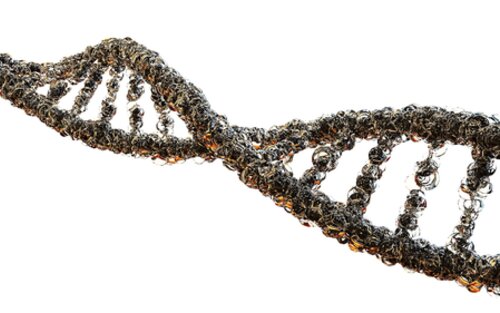Genetic mutations as a possible cause
Since 1993 around 10 percent of ALS patients have been shown to have a genetic defect of chromosome 21. In these ALS sufferers, changes (known as mutations) in the gene responsible for encoding the enzyme superoxide dismutase (SOD1) are the cause. An enzyme is a substance which converts specific substances (called substrates) into new substances called products, without being converted itself.
The means by which this enzyme defect leads to the disease is not yet known. Presumably, the mutation causes a toxic change in functionality of the SOD1 protein. This causes a functional change in the motor neurons and so leads to the development of the condition.
In the more common ‘sporadic ALS’ only mere hypotheses have been formulated at this point in relation to its causes. It seems unlikely that a single cause is responsible for the occurrence of the disease. Research works on the assumption that various genetic and external factors interact to contribute to its occurrence.
Glutamate as a possible trigger
One of the hypotheses for the development of ALS is the presence of too much glutamate in the synaptic cleft - the gap between two neurons through which they communicate. Glutamate is a chemical messenger (known as a neurotransmitter), which influences the transmission of signals between neurons in the central nervous system. The excessive release of glutamate may be responsible for the changes in the motor neurons seen in ALS. The medication Rilutek with the glutamate inhibitor riluzole was developed for the treatment of ALS on the basis of this hypothesis.
Neurofilament dysfunction
The neurofilament hypothesis is considered another possible explanation for the occurrence of ALS. Neurons are supported by so-called neurofilaments. In ALS there might be a dysfunction of the neurofilaments, meaning information can no longer be transported via the nerves.
The rare mutation of the neurofilament gene is considered a genetic risk factor for ALS.
ALS as an potential immune response
In a small number of ALS patients, immune responses against organic elements of neurons have been found. According to the autoimmune hypothesis, a defensive response takes place between antibodies and surface structures of neurons. But because this also occurs in other diseases, a causative role of immune responses in ALS is probably unlikely.
There are also signs that sporadic ALS is caused by infections with viruses. An attack on the motor neurons by the poliomyelitis virus, for example, shows clinical parallels to ALS. Various studies on the causative role of this and other viruses, however, have not confirmed the virus hypothesis.
Increased incidence among footballers
One interesting approach is the physical activity hypothesis. In January 2005, neurologist Dr. Adriano Chio published the results of his study on the incidence of ALS among Italian footballers. The study included 7,325 football players who played in the Italian leagues Serie A and Serie B between 1970 and 2002.
In total, five players were identified who developed ALS in this time - the amount of ALS cases expected statistically was just 0.77. This means that professional Italian footballers as a population group have 6.5 times the risk of developing ALS compared with the normal population.
The causes of the increased disease rates could be higher general physical activity, the use of illegal substances for the enhancement of performance, or genetic factors common among this athletic population.
Lean and active: Of no protection against ALS
Earlier studies on the association between body weight, physical activity, and an increased disease risk showed that ALS patients are often physically active and lean before the onset of the condition. However, a lean build and physical exertion is by no means considered a cause of ALS. Rather, they are to be seen as possible risk factors in a complex causal network consisting of genetic and environmental factors.

